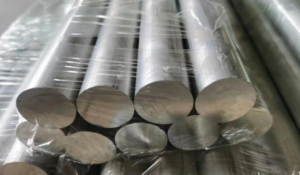Incoloy alloys, as a type of high-temperature alloy material, are widely used in aviation, aerospace, energy, and chemical industries due to their exceptional heat and corrosion resistance. However, prolonged exposure to high temperatures significantly impacts the fatigue life of Incoloy alloys. Therefore, various methods need to be employed during practical applications to enhance the fatigue resistance of these alloy materials. In this article, we will take a closer look at how to improve the fatigue life of Incoloy alloys.

How to improve the fatigue life of Incoloy alloys?
Firstly, temperature control is crucial. Although Incoloy alloys exhibit excellent heat resistance, extreme high-temperature environments can adversely affect their fatigue life. This is primarily because high temperatures can cause grain growth, thermal stress, and thermal expansion in alloys, leading to material deformation or cracking. Thus, precise and real-time temperature control during applications can help detect issues promptly, mitigating the risk of excessive fatigue in Incoloy alloys.
Secondly, optimizing alloy design plays a vital role. Incoloy alloys are often subjected to frequent vibrations, loads, or pressures during use, which can impact their fatigue resistance. By optimizing the design of Incoloy alloys, their fatigue life can be significantly improved. For instance, the Incoloy 800HT alloy, when optimized, exhibits superior fatigue resistance at high temperatures, extending its service life and enhancing its ability to withstand thermal and mechanical stresses.
Furthermore, improving the microstructure of Incoloy alloys can also significantly enhance their fatigue life. The microstructure and grain size of Incoloy alloys influence their fatigue resistance. By meticulously refining and uniformizing the microstructure of Incoloy alloys, the initiation and propagation of cracks can be reduced, thereby strengthening their fatigue resistance.
Lastly, appropriate heat treatment is essential. Heat treatments such as annealing, quenching, and aging can alter the microstructure and grain boundary configuration of Incoloy alloys, subsequently impacting their fatigue life. Depending on the specific alloy material and operating conditions, heat treatment can significantly improve the stability of alloy materials under cyclic stress, resulting in a longer service life for Incoloy alloys.
Summary
In summary, Incoloy alloys, while exhibiting remarkable fatigue resistance at high temperatures, still encounter fatigue issues during practical applications. Therefore, through temperature control, optimizing alloy design, improving microstructure, and employing suitable heat treatment, the fatigue life of Incoloy alloys can be effectively enhanced, enabling them to maintain better fatigue resistance in harsh environments such as high temperatures and high bending loads.
Why Choose Huaxiao Alloy?
Thank you for reading our article and we hope it can help you know how to improve the fatigue life of Incoloy alloys better. If you are looking for suppliers and manufacturers of Incoloy alloys, we would advise you to visit Huaxiao Alloy.
As a leading supplier of Incoloy alloys from Shanghai China, Huaxiao Alloy offers high-quality Incoloy 800/800H/800HT, Incoloy 825, and Incoloy 925/926(AL-6XN) at very competitive prices.



